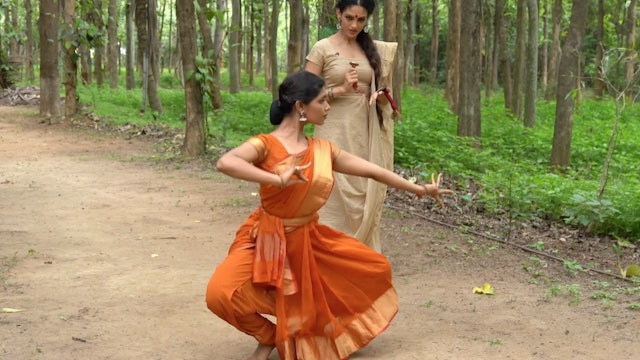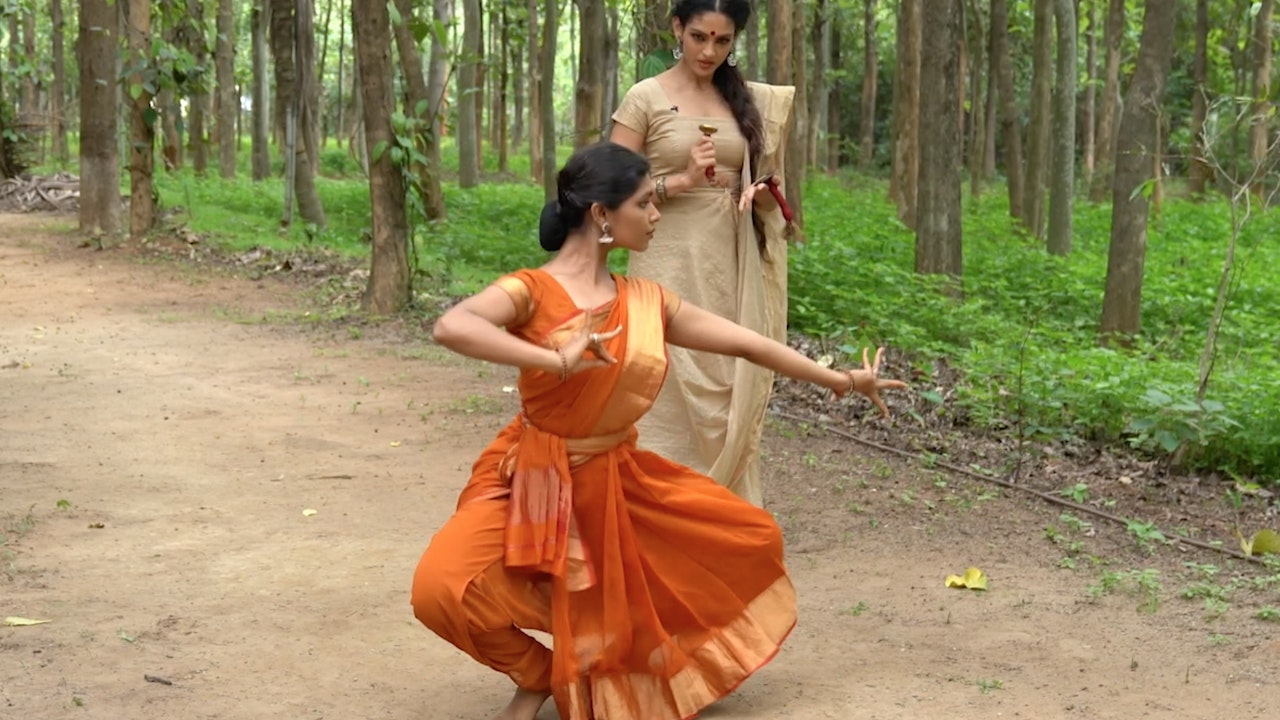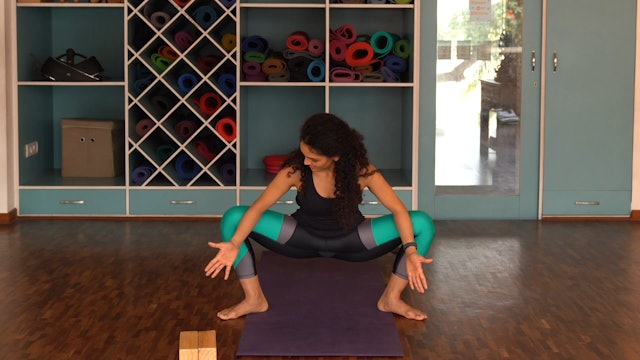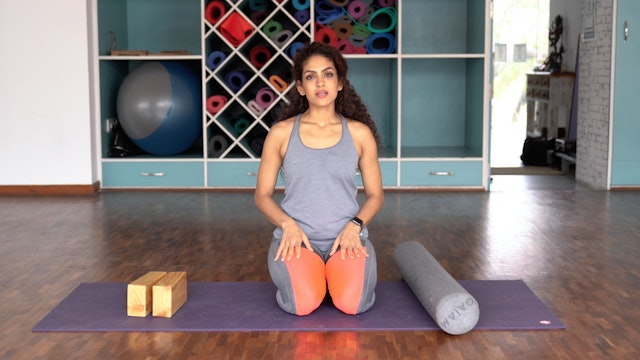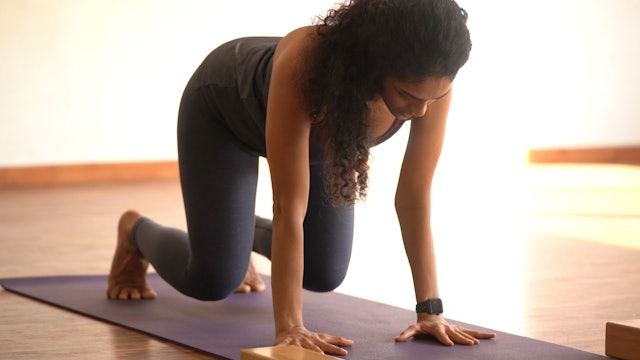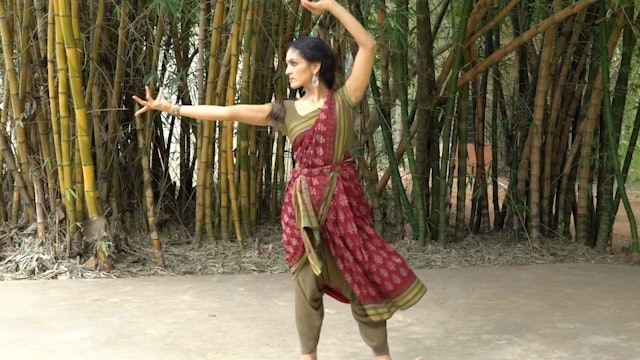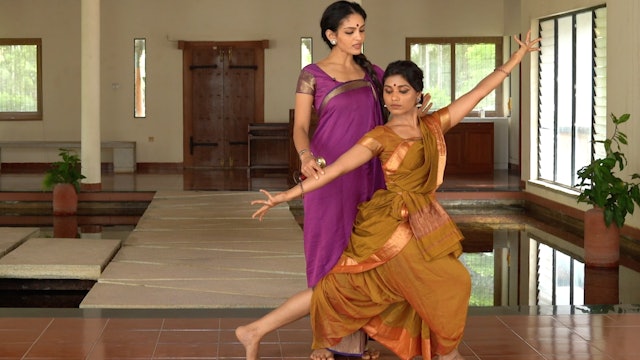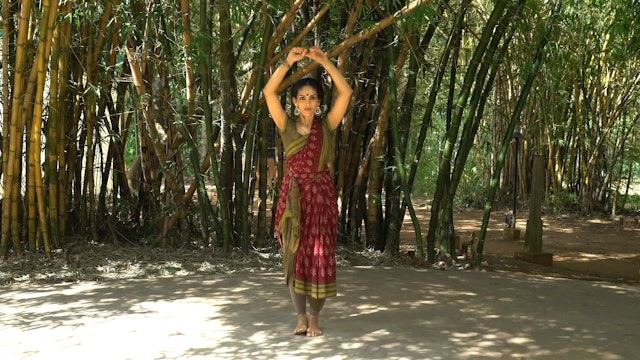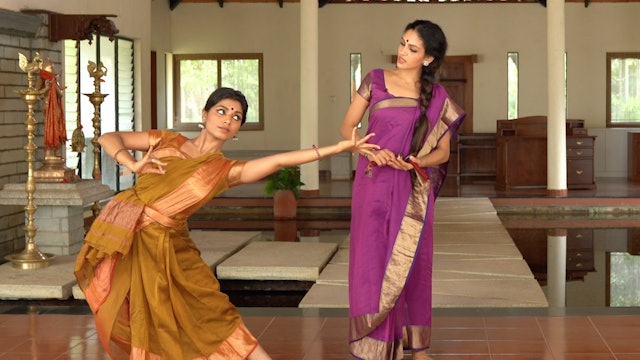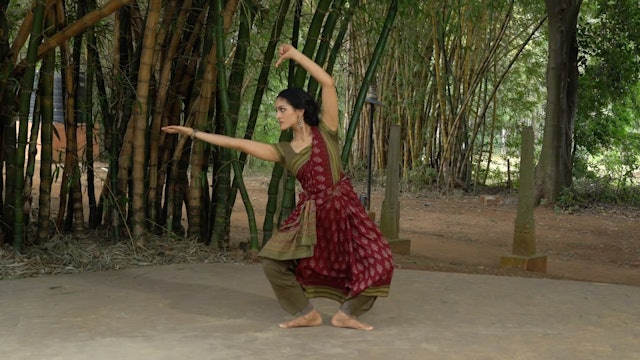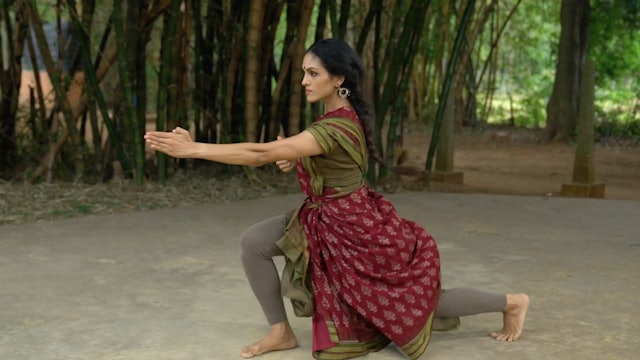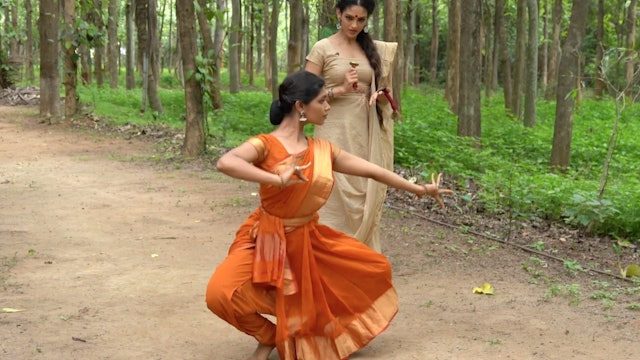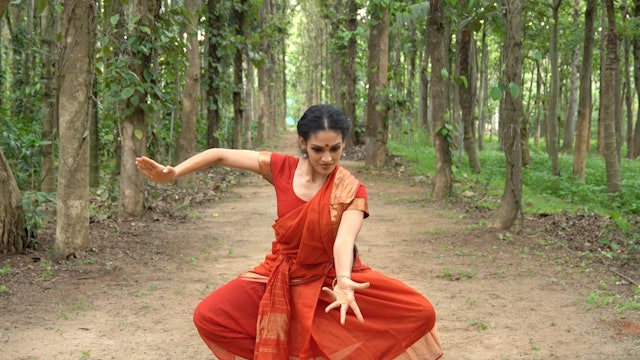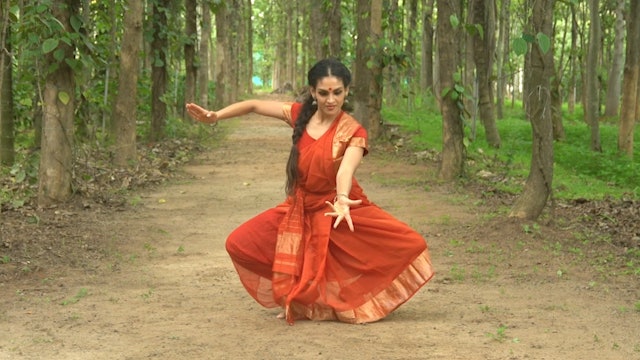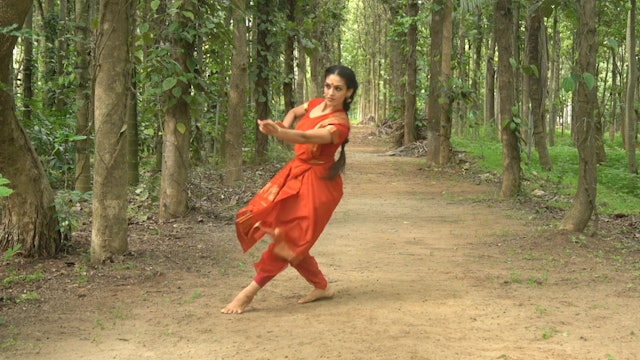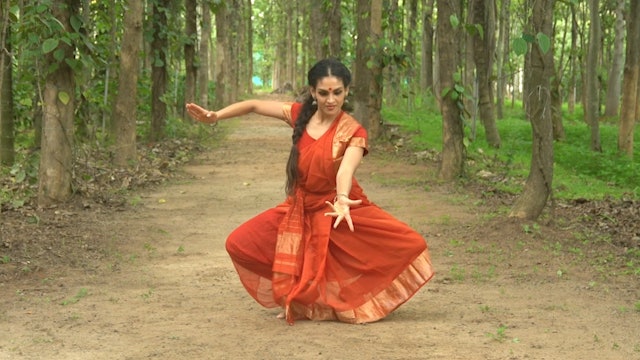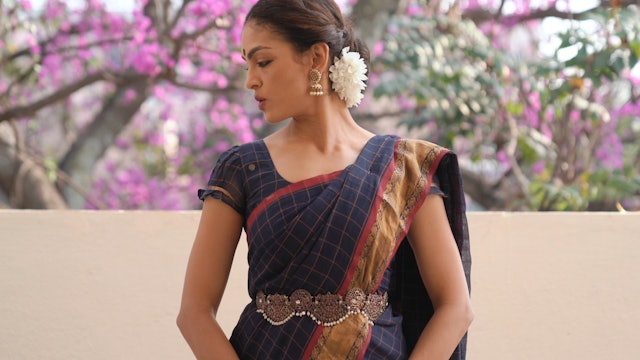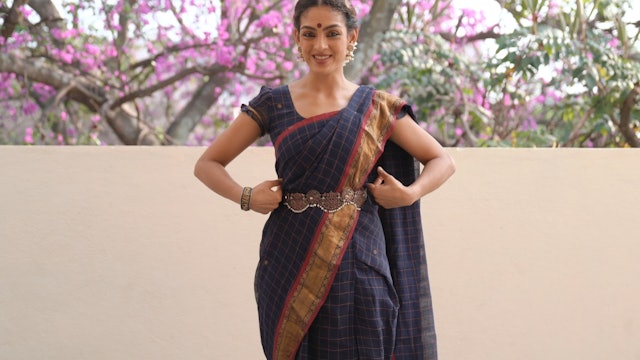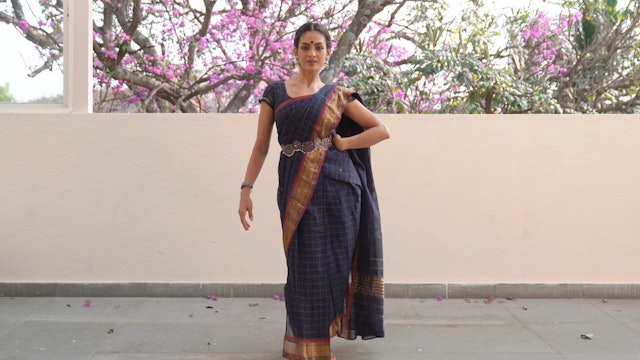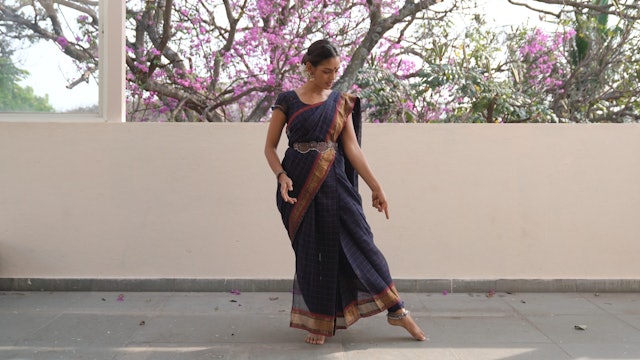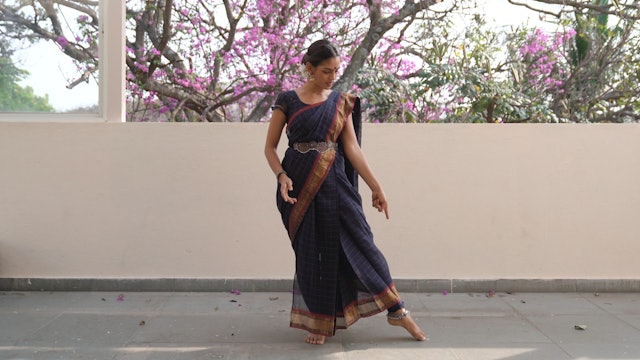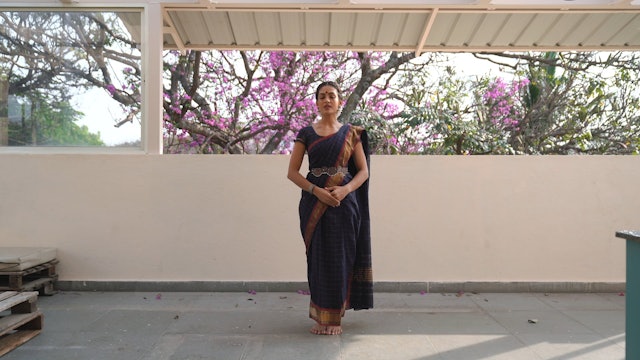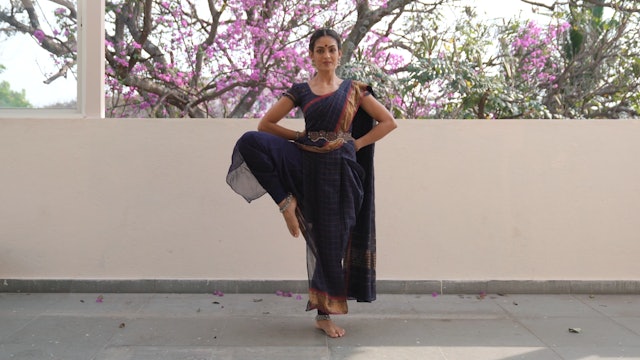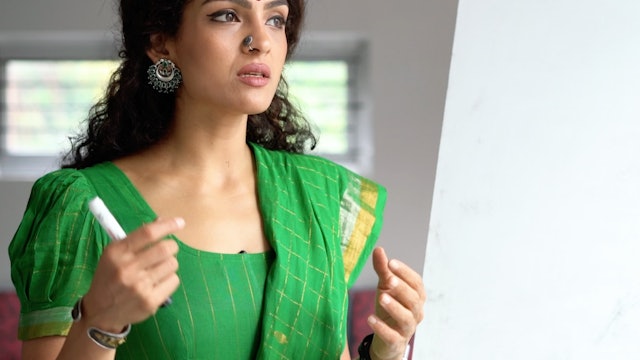Playlist 19
This playlist introduces and progresses all the content in the Raadha Kalpa program. It introduces that Jatiswaram, lectures on Talam, tips for realigning knees and more shlokas.
A Khanda chapu korwe is also introduced in this playlist so students are introduced to a new rhythmic cycle.
-
Hip Openers
This series can be practiced after a basic warm up, before beginning an Adavu practice.
The hip opener series will help you navigate through tight hips. It will help you mobilise your hips and enable you to push your thighs back while sitting in Araimandi. Please do this in combination with str...
-
Knee Alignment 2
Align your knees and stay safe. These videos will help you reinforce alignment and thus help you employ proper usage of the knee joint through movement. The videos will address common misnomers as well as small strengthening exercises that can be practised on days that you do not dance. Try to re...
-
Legs and Core 2
This 25 minute workout, concentrates on your legs and core muscles. It is part of the initial series of instructed videos that have verbal cues at every step. Please pause if you need to, and take a break where necessary. It has a very small portion that has explosive movements. There is an optio...
-
Bramari adavu: Instructions
Bramari literally means to turn. The first Bramari adavu is introduced in the second set of Adavus, the other varieties will be introduced subsequently. It is important to keep the eyes focussed at a particular point and turn the head faster than the body.
Things to keep in mind:
- When stretchi... -
Bramari Adavu
Bramari literally means to turn. The first Bramari adavu is introduced in the second set of Adavus, the other varieties will be introduced subsequently. It is important to keep the eyes focussed at a particular point and turn the head faster than the body.
Things to keep in mind:
- When stretc... -
Korwe Adavu 1: Instructions
The Korwe adavu is a combination of previously introduced foot and body articulations. It is called a Korvey adavu as it cannot be placed into any specific category. It has a Tattu, naatu, Bramari, Serikal amongst other movements. Some Korwe adavus also use a Kudittam in the feet.
Things to keep...
-
Korwe Adavu 1
The Korwe adavu is a combination of previously introduced foot and body articulations. It is called a Korvey adavu as it cannot be placed into any specific category. It has a Tattu, naatu, Bramari, Serikal amongst other movements. Some Korwe adavus also use a Kudittam in the feet.
Things to kee...
-
Korwe Adavu (utplavana 1 ) : Instructions
The Korwe adavu is a combination of previously introduced foot and body articulations. It is called a Korvey adavu as it cannot be placed into any specific category. It has a Tattu, naatu, Bramari, Serikal amongst other movements. Some Korwe adavus also use a Kudittam in the feet.
Things to keep...
-
Korwe Adavu (utplavana 1 )
The Korwe adavu is a combination of previously introduced foot and body articulations. It is called a Korvey adavu as it cannot be placed into any specific category. It has a Tattu, naatu, Bramari, Serikal amongst other movements. Some Korwe adavus also use a Kudittam in the feet.
Things to kee...
-
Serikal Adavu
"Serikal", means to slide. This series of Adavus include a variety of sliding movements in the Adavu series of The Raadha Kalpa Method. The first variety is introduced in this series. Technically 'Jaaru' and 'Serikal' mean the same thing, but we will call this second series of sliding Adavus as '...
-
Khanda Chapu Korwe: Instructions
Please watch the subsequent Talam lectures that incorporate Gati and Yati and revisit this korwe.
The Korwe series continues with a variety of Talams. This is the first Korwe in Khanda Gati that has rhythmic layers of other counts for the adavus on top of the 5 count base.
Gati refers to an i...
-
Khanda Chapu Korwe 1
Please watch the subsequent Talam lectures that incorporate Gati and Yati and revisit this korwe.
The Korwe series continues with a variety of Talams. This is the first Korwe in Khanda Gati that has rhythmic layers of other counts for the adavus on top of the 5 count base.
Gati refers to an int...
-
Adi Tala: Pancha Nadai/ Jathi Korwe
Please watch the Talam lectures upto Lecture 5 before beginning this Korwe. There are two parts for the instruction of this Korwe, in Adi Talam.
The Korwe series continues with a variety of Talams. This is the first Korwe in Adi Talam that layers the adavus in all 5 Jathis. (Tishra, Chatushra, K...
-
Sarvalaghu Jathi 1
This Jathi has an instructional video. The counts for all the Sarvalaghu Jathis are all in 4 counts. Please watch and try to learn the Jathi for practice.
Please keep in mind that the Raadha Kalpa method likes to reinforce the idea of neutrality in Nritta patterns that are not placed within a c...
-
Sarvalaghu Jathi 2
This Jathi does not have an instructional video. The counts for all the Sarvalaghu Jathis are all in 4 counts primarily. There are small variations in this particular Jathi. Please watch the Tala Theory video after you learn the Jathi and try to analyse where the variations occur.
Please keep ...
-
Sarvalaghu Jathi 3
This Jathi has an instructional video. The counts for all the Sarvalaghu Jathis are all in 4 counts. Please watch and try to learn the Jathi for practice.
Please keep in mind that the Raadha Kalpa method likes to reinforce the idea of neutrality in Nritta patterns that are not placed within a c...
-
Shiro bheda Shloka
The head is considered one of the Angas, or major limbs according to the Natyashastra.
The movements of the head are used not only for the precise control in the execution of Nritta but also to communicate meaning in the context of gesture.
Please refer to the Shloka below for pronunciation. ...
-
Pārśva Bheda Shloka
The side, Parshva is considered one of the Angas, or major limbs according to the Natyashastra.
The movements of the side are used not only for the precise control in the execution of Nritta but also to communicate meaning in the context of gesture.
Please refer to the Shloka below for pronun...
-
Katī bheda Shloka
The hips are considered one of the Angas, or major limbs according to the Natyashastra.
The movements of the hips and waist are used not only for the precise control in the execution of Nritta but also to communicate meaning in the context of gesture.
Please refer to the Shloka below for pronun...
-
Pādah bheda Introduction
Explains the things to keep in mind when executing the foot movements. Please watch carefully before practising with the shloka.
-
Pādah bheda Shloka
The feet are considered one of the Angas, or major limbs according to the Natyashastra.
The movements of the feet are used not only for the precise control in the execution of Nritta but also to communicate meaning in the context of gesture.
Please refer to the Shloka below for pronunciation. P...
-
Jānu bheda Introduction
The introduction to the isolations of the knee. Some shlokas from subsequent literary texts were put together through Dr Padma Subramanyam's research to help understand the Nātyaśāstra better.
-
Jānu bheda Shloka
Jānu bheda according to the Sangīta Ratnākara, is an Upānga. The knees are considered one of the minor limbs.
The movements of the knees are used not only for the precise control in the execution of Nritta but also to communicate meaning in the context of gesture. Some of the positions elucidate...
-
Talam: Lecture 7, Yatis
In Carnatic music, Yatis are used to guide Rhythmic and musical compositions. The complexity and use of Yatis varies from one tradition to another, creating mathematical shapes and structures in the music and rhythm. We also incorporate Yatis in the choreography of adavus in dance, often choosing...
